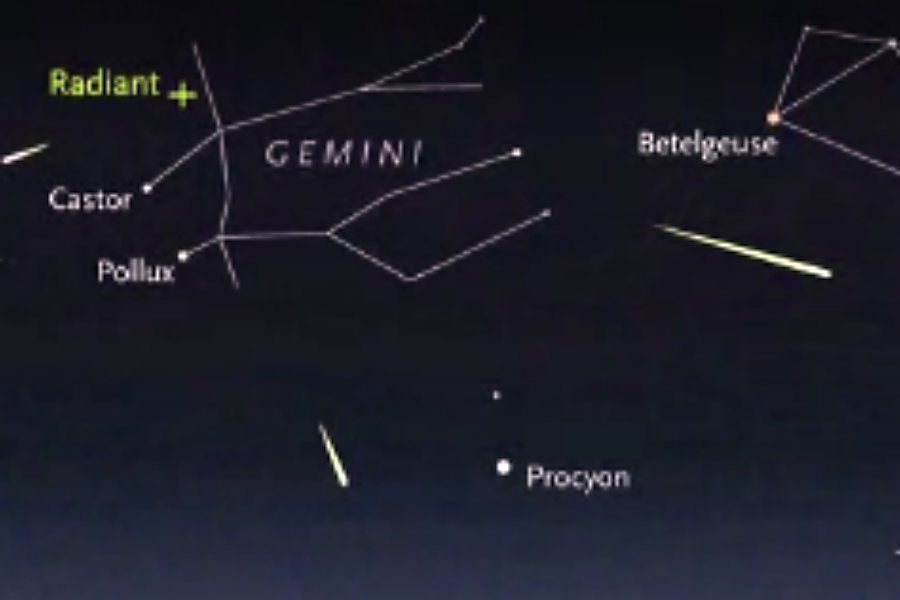How (and where) to watch tonight's Geminid meteor shower
Loading...
Late Saturday night and early Sunday morning, streaks of white will light up dark skies. But to get the best views of the Geminid meteor shower, here are a few strategies to employ.
This evening marks the peak of the Geminid meteor shower, an annual celestial celebration when Earth passes through debris from the asteroid Phaethon. NASA predicts a peak of more than 100 meteors per hour.
Because the last-quarter moon will be quite bright, the meteors will be most visible in the darkest places, far from cities or other artificial light sources. EarthSky, a Texas-based science website, recommends manually blocking out the moon by sitting near a treeline — or, it says, just look away from the moon.
NASA says that viewers should set aside plenty of time to watch a meteor shower, as it takes 30 minutes for eyes to adjust to the darkness. So dress warmly and bring blankets to beat the December temperatures.
The most meteors will likely be visible at around 2 a.m. local time anywhere on the planet, which is when the Gemini constellation peaks in the sky, according to EarthSky. While the shower hits its peak tonight, amazing views are not guaranteed worldwide. Weather can ruin the show and there are no guarantees that you'll spot the cosmic debris.
“Meteor showers are like fishing. You go, you enjoy nature … and sometimes you catch something,” EarthSky says on its website.
Northern Hemisphere viewers will have a better show, as the constellation barely clears the horizon in the Southern Hemisphere.
In the U.S., viewers in the Southwest and Southeast will have the best conditions, while the Midwest and the West Coast are worse off, AccuWeather Meteorologist Andy Mussoline predicts.
If you're far from natural darkness, Slooh, a robotic telescope, will stream the meteor shower live on its website starting at 8 p.m. EST.
The Geminid meteor shower is the last of the year. Up next is the early-January Quadrantids shower, but the very short peak watch time coupled with a nearly-full moon will limit visibility, according to EarthSky.








